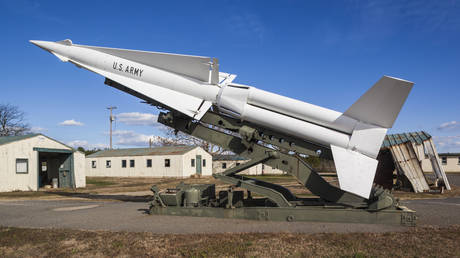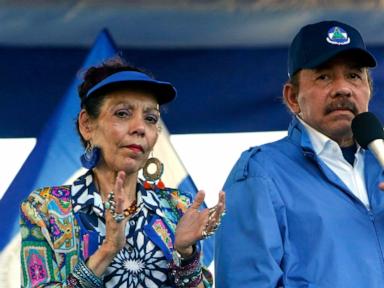ARTICLE AD BOX
On the flat plains of central Poland, where densely packed poultry sheds crowd the landscape, the future of Europe’s meat industry hums to the rhythm of millions of broiler chickens.
Inside, birds bred to grow at record speed shuffle under the constant glow of artificial light, each one a copy of the last. They live fast, grow faster and end their lives in industrial kill lines — destined for export to Germany, the U.K. and Saudi Arabia.
Chicken isn’t just dinner. Here — and across much of the world — it’s a policy choice.
From Brussels to Brasília, policymakers have long championed poultry as a “transition meat” — a pragmatic alternative to climate-intensive beef. Chicken is lower-emission, relatively affordable, scalable across global markets and often promoted as a leaner, lower-fat option compared with pork or beef. In political shorthand: the least-worst option.
But as a fresh wave of highly pathogenic avian influenza, also known as bird flu, sweeps across continents — killing hundreds of millions of birds, infecting some mammal species and prompting sweeping lockdowns — the virus is edging closer to spilling over into humans. That is putting the poultry playbook under stress.
In the U.S., more than 90 million birds have been culled over the past year. In Poland, the hardest-hit EU country, over 11.5 million were culled in the first months of 2025 to stop the disease from spreading.
Behind those numbers lie deeper dilemmas: ethical shortcuts, epidemiological risk and a protein system optimized for speed, not resilience.
Brussels clamps down on the coop
The European Commission moved in early April to expand protection zones and tighten biosecurity rules in Poland, which alone accounted for some 80 of the EU’s 200 confirmed outbreaks of highly pathogenic bird flu this year. The Commission had warned that Poland’s initial response posed a risk to biosecurity in the EU’s borderless internal market and threatened measures that would have effectively shut down all exports from the country.
Under pressure from Warsaw, Brussels stepped back from its toughest proposals, but not without conditions: The Commission asked the Polish authorities to present an “action plan” to contain the virus, which it agreed to monitor closely.
Commission food safety spokesperson Eva Hrnčířová emphasized that the response was “not something about Poland without Poland,” noting that the agreed measures were drawn up “together with the Polish national and regional authorities” and “based on information from Poland.” The aim, Hrnčířová added, was “to create protection rather than restriction.”
What’s notable is where that plan came from. As Polish Agriculture Minister Czesław Siekierski explained in a radio interview, the proposed measures — including containment zones and limits on introducing new flocks, but no halt to production or exports — came from the poultry industry itself and were then adopted by the government. The plan was formally endorsed by Poland’s chief veterinary officer and submitted to Brussels as the country’s official response.
“This was a proposal from the producers,” Siekierski said. “And it was passed to Brussels as our official position.”
Siekierski has repeatedly defended the sector’s symbolic and economic role, calling it “the flagship of Polish agriculture.” But he also acknowledged: “The problem of avian influenza in Poland cannot be solved without bearing some costs — but what matters is finding systemic solutions.”
No EU country has more at stake. Once a modest agricultural player, Poland is now the bloc’s poultry powerhouse — responsible for nearly one in five chickens produced and a third of all exports. The sector supports hundreds of thousands of jobs and sends more than half its output abroad.
Its rise was turbocharged by industrial scale and genetic homogeneity. Most Polish broilers come from a few breeds that reach slaughter weight in just five weeks. That efficiency is driven by tight vertical integration: Major poultry companies control nearly every stage of production — from breeding and feed mills to slaughterhouses and export.
The result is a high-performing machine, but also a house of cards. Nearly half of Poland’s poultry is produced in just two regions, Wielkopolskie and Mazowieckie, where farms sit tightly packed. Poland’s chief veterinary officer, Krzysztof Jażdżewski, recently admitted that “chicken houses built on top of each other” create ideal conditions for the virus to spread.
And when the virus gets in, the consequences escalate quickly. Most of the millions of birds being culled aren’t actually sick. But in a system built for maximum output, the detection of even a single infection can mean killing entire sheds — sometimes hundreds of thousands of birds at once. The logic is brutally simple: slaughter the whole flock to stop the virus from jumping to the next farm.
Biosecurity enforcement remains patchy. Jażdżewski has warned of a shortage of trained veterinary inspectors, saying: “We have a problem with boots on the ground.” Basic safeguards like disinfecting equipment and securing feed supplies aren’t always applied consistently.
But even perfect biosecurity may not be enough.
One state-affiliated epidemiologist, who was not authorized to speak on the record, told POLITICO that the system’s design allows outbreaks to escalate rapidly. “When a virus like this lands in a region with high farm concentration, it’s like throwing a spark into a powder keg,” they said. Once inside, it spreads through trucks, equipment, clothing — even dust and feathers carried by the wind.
This epidemiologist noted that while there have been discussions about limiting how closely farms can be sited, “the law doesn’t work backward” — meaning existing clusters would likely remain.
Industry defends the model
Poland’s poultry industry rejects the idea that the system’s scale or structure is to blame.
In a written response to POLITICO, the National Poultry Council argued that outbreaks are primarily driven by wild birds — not farm density. The group also pushed back against suggestions that producers should shoulder more of the costs, insisting that poultry businesses already invest heavily in biosecurity and that “professional, economically strong farms are precisely those best positioned” to uphold standards.
The EU-wide industry group AVEC struck a similar tone, telling POLITICO that production at scale “does not necessarily increase” the risk of large-scale outbreaks. It emphasized that keeping birds indoors, as is common in conventional systems, helps minimize contact with wild birds.
Some industry representatives go further. “We cannot agree to let irresponsible producers repeatedly expose the whole poultry sector to losses,” said Paweł Podstawka, head of the Polish Federation of Poultry Farmers and Egg Producers, in comments to Polish media. He called for licensing poultry farming as a profession. While welcoming the deal with Brussels, he warned: “If we don’t improve, there won’t be any leniency next time.”
 Major poultry companies control nearly every stage of production — from breeding and feed mills to slaughterhouses and export. | Rehan Khan/EPA
Major poultry companies control nearly every stage of production — from breeding and feed mills to slaughterhouses and export. | Rehan Khan/EPAOther European countries have faced similar risks — but not on Poland’s scale. France, once the EU’s epicenter for avian influenza, has recorded just a single farm outbreak this year. In Germany and the Netherlands, most cases have been among wild birds, with only sporadic infections on farms.
The geopolitics of chicken
Supporters of the poultry-first strategy emphasize the climate calculus. Compared with beef, chicken emits up to 90 percent less CO₂ per kilo of protein. It also uses far less water and land.
The World Bank now touts chicken as a climate asset — one of the least polluting animal proteins and a tool for reducing food system emissions.
But those environmental gains come with trade-offs. Male chick culling, still widespread outside Germany and France, sees hundreds of millions of baby birds killed each year for being unprofitable. The dominant broiler breeds have been called “ticking time bombs,” prone to chronic pain and heart failure. Antibiotic resistance, driven in part by prophylactic use, looms as a largely unspoken crisis.
In 2023, the U.N.’s Food and Agriculture Organization described poultry and eggs as essential to human health, especially in low-income contexts. But just two years later, the same agency is raising the alarm. As H5N1 mutates and spreads to mammals — including dairy cows and wild carnivores — the agency has warned of “serious impacts” on food security and public health. The growing ability of the virus to jump species has reignited fears of a zoonotic leap to humans.
“This is more than an agricultural crisis,” FAO Deputy Director General Beth Bechdol said in March. “The uncontrolled spread of avian influenza and other zoonotic diseases pose serious risks to global health, to human health, to economic stability — just as we have seen with Ebola and other human pandemics.”
The system holds — for now
Change, if it comes, won’t be painless. Synthetic, or lab-grown, meat remains years from mainstream approval. Plant-based alternatives are stagnating. There’s no clear successor to chicken on the protein horizon, giving the poultry lobby staying power and broiler chickens time to keep growing.
The deal between Warsaw and Brussels remains shaky. An EU veterinary mission visited Poland in late April to assess whether the action plan is being enforced — and whether it’s working. A final report is expected in the coming weeks. A negative verdict could trigger new restrictions.
Several scientists echoed concerns that it’s not wild birds or lapses in hygiene, but the industrial model itself that makes outbreaks hard to contain — whether in Poland, the Netherlands or the U.S.
“If consumers were willing to pay more, the industry could afford to reduce intensity. But as long as price pressure rules, production stays big, dense — and risky,” said Lars Erik Larsen, a leading Danish virologist at the University of Copenhagen.
Even top-tier biosecurity can fail, he warned: “Somebody will always make a mistake — and once the virus gets into these dense systems, it spreads fast.” While vaccination is often floated as a solution, it’s no silver bullet. Vaccines reduce symptoms but don’t always block transmission — meaning the virus may still circulate silently in flocks.
 The U.N.’s Food and Agriculture Organization described poultry and eggs as essential to human health. | Caroline Brehman/EPA
The U.N.’s Food and Agriculture Organization described poultry and eggs as essential to human health. | Caroline Brehman/EPAEven Siekierski now seems to grasp how fragile the system has become. Over the weekend, he posted candidly on social media: Producers hit by outbreaks get generous compensation; those spared enjoy high prices. “Who pays for this? The state budget,” he wrote, noting that the ministry had burned through its annual biosecurity funds by March.
“That’s why I believe it’s time to seriously start an agricultural transformation,” he added. “TOGETHER. But that, of course, is the hardest part …”
.png)
 3 months ago
4
3 months ago
4








 English (US)
English (US)